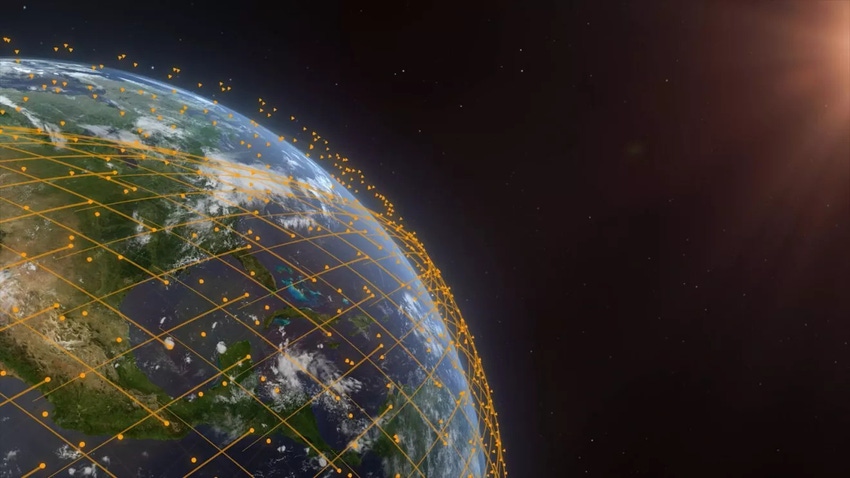Project Kuiper tests orbital mesh network using lasers
Project Kuiper, Amazon’s satellite offshoot, will bolt on lasers to its fleet of satellites to form a mesh network in space.
December 18, 2023

Project Kuiper launched two prototype satellites in October, however the optical inter-satellite link (OISL) capabilities were left confidential until now.
Testing has been completed of the ‘advanced optical communications payloads’ on the KuiperSat-1 and KuiperSat-2 satellites, and they managed to maintain 100 Gbps links over a distance of nearly 621 miles. The OISLs will be operational in the firm’s first production satellites, set for launch in the first half of 2024, we’re told.
OISLs use infrared lasers to send data between spacecraft as they orbit the planet, explains the release, meaning satellites can send data directly to other satellites in a constellation instead of sending data to antennas on the ground.
Every Project Kuiper satellite will be kitted out with multiple optical terminals to connect multiple satellites at a time, which will establish ‘high-speed laser cross-links’ that form a mesh network in space.
“With optical inter-satellite links across our satellite constellation, Project Kuiper will effectively operate as a mesh network in space,” said Rajeev Badyal, Project Kuiper's vice president of technology. “This system is designed fully in-house to optimize for speed, cost, and reliability, and the entire architecture has worked flawlessly from the very start.
“These immediate results are only possible because we approached our OISL architecture as one part of a fully integrated system design, and it’s a testament to this team’s willingness to invent on behalf of customers. We’re excited to be able to support these next-generation OISL capabilities on every Kuiper satellite from day one.”
Ricky Freeman, vice president of Kuiper Government Solutions added: “Amazon’s optical mesh network will provide multiple paths to route data through space, creating resiliency and redundancy for customers who need to securely transport information around the world. This is especially important for those looking to avoid communications architectures that can be intercepted or jammed, and we look to forward to making these capabilities available to public sector customers looking to move and land data from remote locations to their desired destination.”
A highlighted benefit of using this tech is the speed at which you can move data around the world. Light travels faster in space than it does through glass, we’re told, and Kuiper’s claims its orbital laser mesh network can move data 30% faster than if it travelled the equivalent distance via terrestrial fibre optic cables.
It is apparently particularly useful in situations where there are no nearby ground stations— such as a cruise liner in the middle of the ocean or an aircraft in flight. And indeed, that sort of thing remains the most compelling use case for the surge in satellite comms deployments in the last few years.
About the Author(s)
You May Also Like








.png?width=300&auto=webp&quality=80&disable=upscale)


_1.jpg?width=300&auto=webp&quality=80&disable=upscale)


.png?width=800&auto=webp&quality=80&disable=upscale)